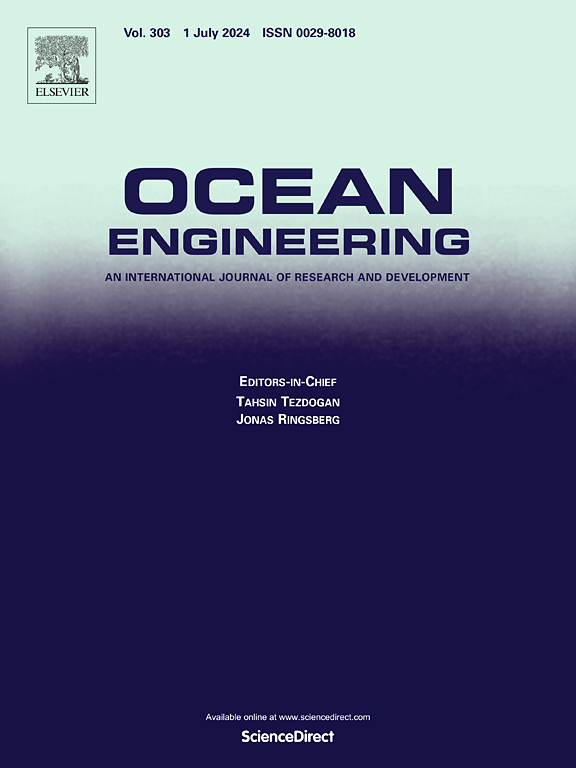Interference between main and auxiliary rotors in floating dual-rotor wind turbines under stationary and surge conditions
IF 4.6
2区 工程技术
Q1 ENGINEERING, CIVIL
引用次数: 0
Abstract
As the size of floating offshore wind turbines increases, the cylindrical segments at the blade roots, which have poor aerodynamic performance, also lengthen to meet structural strength requirements, leading to considerable wind energy dissipation. The floating dual-rotor wind turbine (FDRWT) emerges as a solution to mitigate this challenge. This study applies CFD method on a full-scale model to explore aerodynamic features of FDRWTs. Initially, interaction between the main and auxiliary rotors, as well as the overall aerodynamic performance of the FDRWT without platform motion, is investigated. Results show that the overall efficiency of the FDRWT exceeds that of the corresponding floating single-rotor wind turbine (FSRWT) by 1.74%, despite the main rotor's efficiency decreases by 1.87% and the auxiliary one's by 3.37%, due to mutual interference. The study also examines the FDRWT's performance under platform surge motion, revealing that both the average value and fluctuations of the total power coefficient increase with surge intensity. Additionally, the auxiliary rotor exhibits high-frequency, low-amplitude fluctuations induced by the main rotor. While the FDRWT enhances energy capture, its economic feasibility, considering construction and maintenance costs, must be carefully evaluated. These findings highlight the potential of FDRWTs to improve offshore wind energy efficiency but underscore the need for detailed economic assessments in their design.
求助全文
约1分钟内获得全文
求助全文
来源期刊

Ocean Engineering
工程技术-工程:大洋
CiteScore
7.30
自引率
34.00%
发文量
2379
审稿时长
8.1 months
期刊介绍:
Ocean Engineering provides a medium for the publication of original research and development work in the field of ocean engineering. Ocean Engineering seeks papers in the following topics.
 求助内容:
求助内容: 应助结果提醒方式:
应助结果提醒方式:


